European cities step up as record heatwaves highlight urgent need for climate adaptation
The Covenant of Mayors' Cities Refresh campaign brings together cities in their efforts to tackle extreme heat
As extreme heat stifles Europe, people living in cities are amongst those who suffer the most. Local governments across Europe are acting faced with this threat, rethinking their cities and putting in place clear protocols to protect their populations.
With Europe facing increasingly severe heatwaves, cities are under growing pressure to respond to the escalating risks of extreme heat. During the most recent heatwave, which gripped much of the continent from late June to early July, temperatures soared above 40°C in countries like Spain and Italy, triggering wildfires and straining public health systems. A rapid scientific analysis estimates that around 2,300 people died of heat-related causes across 12 European cities during this period, with roughly 1,500 of those deaths directly linked to human-driven climate change.
Although striking silently and less visible than floods or wildfires, heat is the number one cause of climate-related deaths in Europe. Urban areas, where heat islands intensify temperatures, are particularly vulnerable – putting lives at risk, deepening social inequalities, and undermining economic vitality. Scientists warn that climate change has made heatwaves in Europe up to 4°C hotter, dramatically increasing the human toll. As deadly heat becomes more frequent, the urgency for cities to adapt and safeguard their populations has never been clearer.
Local action to address heat
Across Europe, local governments are taking action. The EU Covenant of Mayors – an initiative run by the European Commission – brings together over 10,000 signatory cities and towns across Europe that have committed to tackling climate change, both by lowering emissions and adapting to growing climate hazards.
Within the Covenant of Mayors community, 85% of local adaptation plans now identify “urban heat variation” as a key hazard. Cities are using integrated approaches combining mitigation, adaptation, and energy poverty to tackle heat on multiple levels.
Earlier this year, the Covenant of Mayors launched the Cities Refresh campaign, bringing together over thirty cities, in Europe and beyond, to showcase the actions they are taking to stay cool. The aim of the campaign is to inspire other cities and raise awareness around the wide-range of solutions out there for local governments to address rising heat by restoring healthy environments, improving quality of life, and redesigning their cities so they remain safe and dynamic for everyone in a warming world.
Integrating more nature in cities
While each city brings its own context and challenges, one solution to heat emerges across the board: re-integrating nature into urban areas. 91% of local climate action plans in Europe inlcude nature-based solutions in their adaptation measures. Many of the Cities Refresh campaign actions to combat heat focus on integrating more vegetation and water into public spaces and city infrastructure, as an effective way to cool down city temperatures.
We see cities across Europe depaving iconic plazas as well as streets and parking lots to make room for nature. In a study on the resilience of their historic centre, the mediterranean city of Marseille observed that over 75 years, they had lost half of its tree coverage. Today, they are working to depave and replant trees in its centre and across the city. To guide their population in staying fresh during hot periods, they have mapped shaded “cool itineraries” throughout the city.
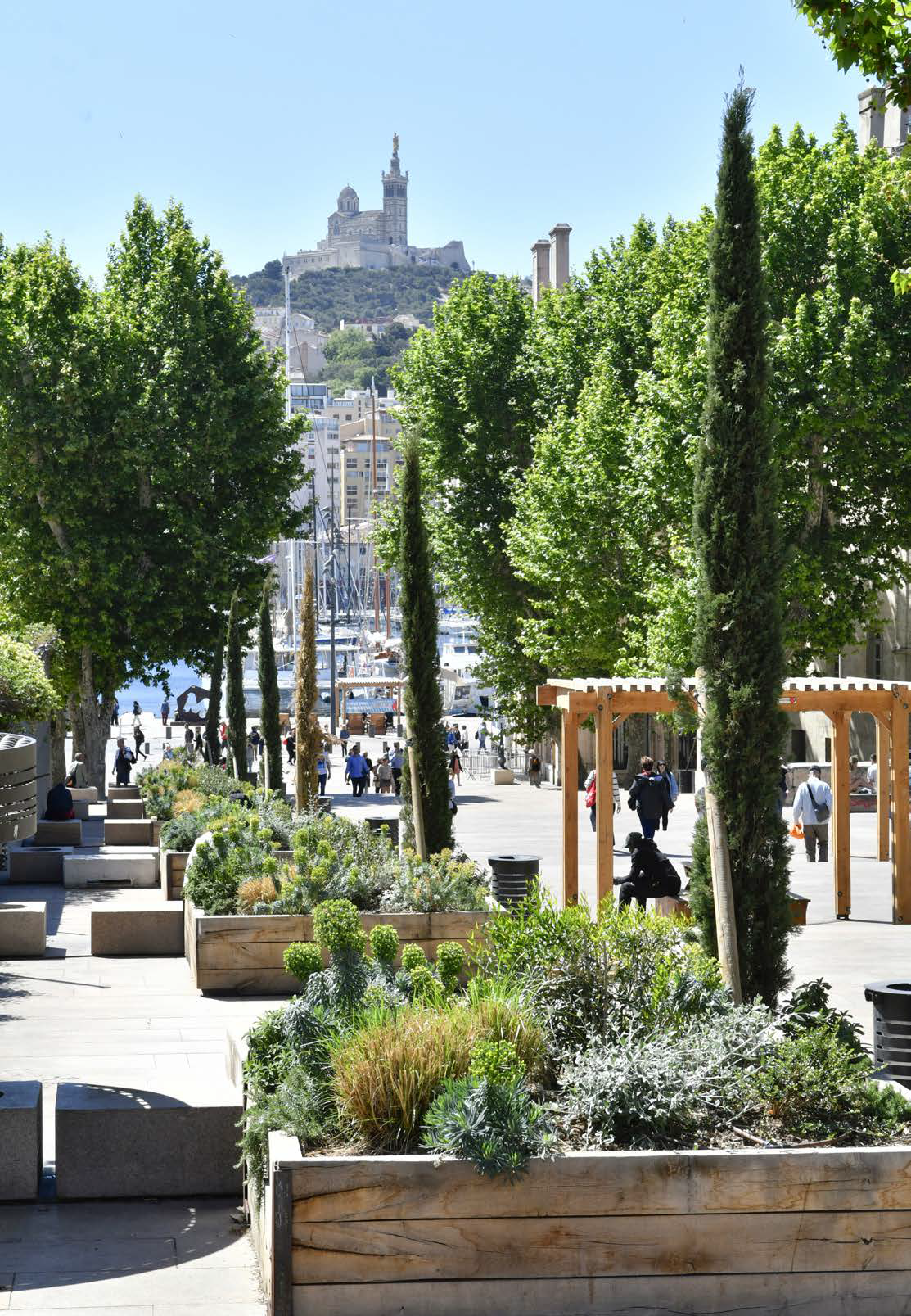


Guimarães, the European Green Capital of 2026, is investing in connecting its green and blue infrastructure to create green belts throughout the city – restoring natural corridors and developing urban forests, community gardens, and rain-fed meadows. This is also an approach used in cities globally, championed by Medellín’s green corridors, where they have developed 30 green corridors to expand the city’s canopy cover and cool the city while improving air quality.
In addition to expanding green spaces, cities are focusing on improving them. The city of Reggio Emilia in Italy has focused on enriching the quality of their green spaces, to turn nature into a real ally against climate hazards. Their approach has been to reimagine its parks – too manicured and lacking in shade or freshness – creating a new model focused on biodiversity and climate-positive vegetation. So far, twelve of their parks have embraced their new model.
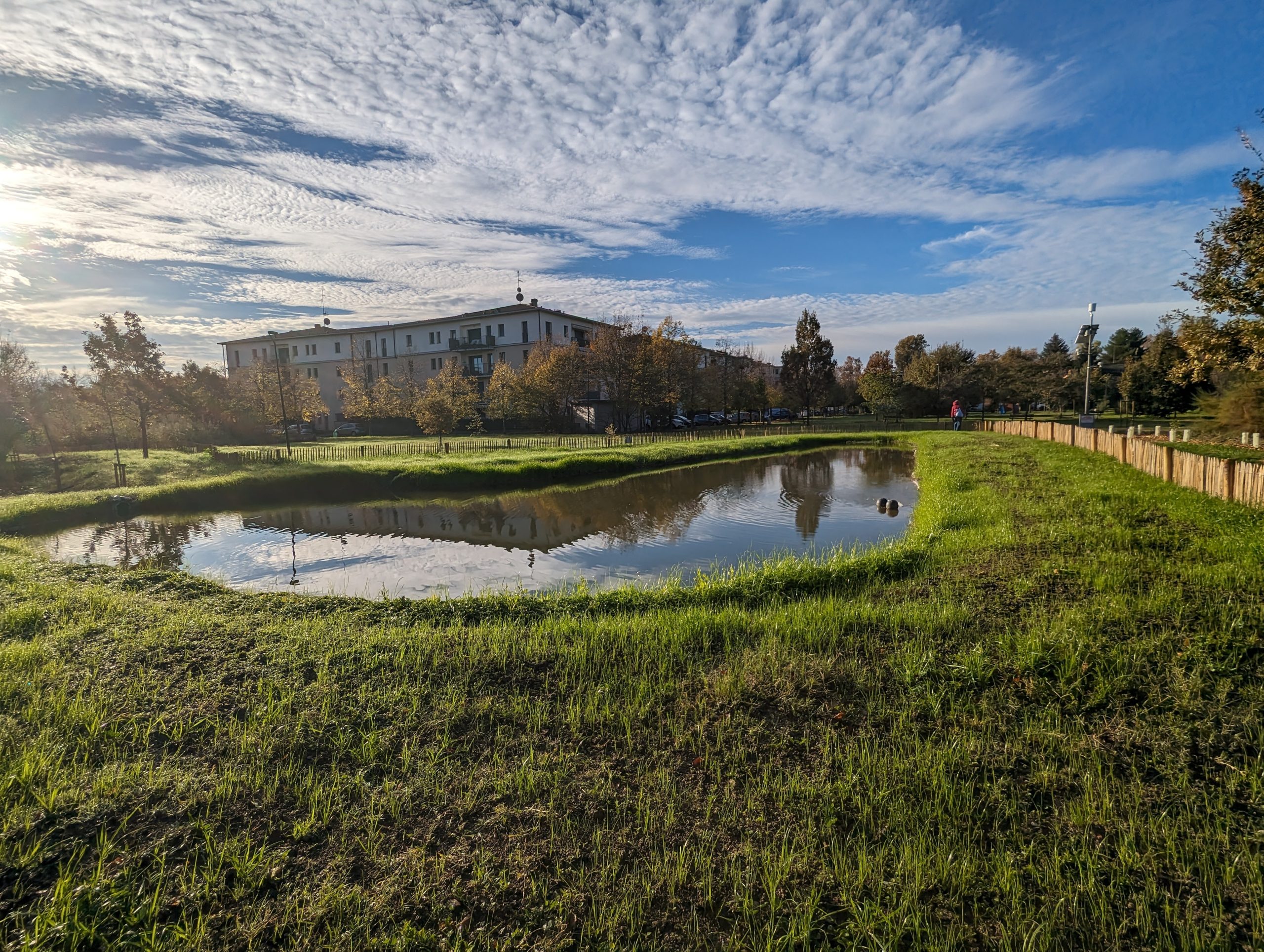

Another area that local governments can transform to be more resilient are municipal schools – especially important considering that children are amongst the most vulnerable to heat. Paris has reimagined school yards through its “cours oasis” program, greening 165 school yards since 2017, with the added benefit of opening them to the public during summer holidays – an approach echoed by Lille Metropole.
Many cities across Europe are also thoughtfully reintroducing water into public spaces, not just as a way of improving air temperature, but also to create more accessible swimming places for urban populations. Just a few weeks back, Paris experienced a historic moment as people plunged into the Seine for the first time in decades. Through a Swimmable Cities Alliance, Paris, Rotterdam, and others are restoring urban waterways with the aim of improving their city’s health, resilience and quality of life.
Rethinking our cities’ design
Beyond public greening, cities are rethinking their public spaces to integrate passive cooling techniques and bioclimatic design. Cities can cool down considerably by just changing their pavement. This was Rethymno’s approach, a small Cretian city, that has transformed its public spaces with the use of compressed soils, cool pavement and reflective road paint.

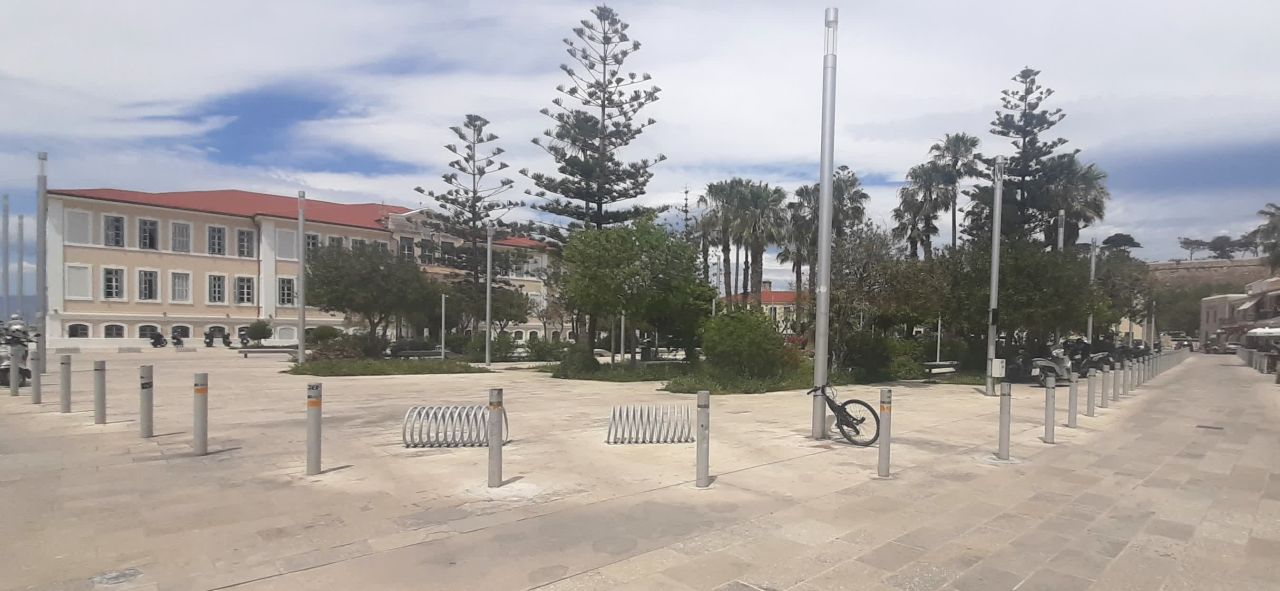
In many city and historic centres, where trees are not an option, streets and public spaces are over exposed and become unliveable during the day. The city of Toulouse in Southern France, accustomed to heatwaves and temperatures reaching 40 degrees in summer, is focusing on improving thermal comfort in its public spaces by testing different shading structures. These include wooden pergolas, seasonal temporary shades, shade sails, and Andalusian-style shade sails and ribbons. A mobile inflatable shade was also tried. The pilot project will compare these options to find the most effective ones for broader use across the city.
Cities must also rethink their buildings to improve citizens comfort and protect them from deadly heat. In Getafe, Spain, a working class city in Madrid metropolitan area, already hot summers become stifling in its characteristic apartment blocks. For this reason, the municpality is placing summer thermal comfort at the heart of its building renovation strategy, part of their Hogares Saludables (“healthy homes”) programme. This includes improved insulation, green infrastructure, and passive cooling, particularly in low-income neighbourhoods with vulnerable populations.
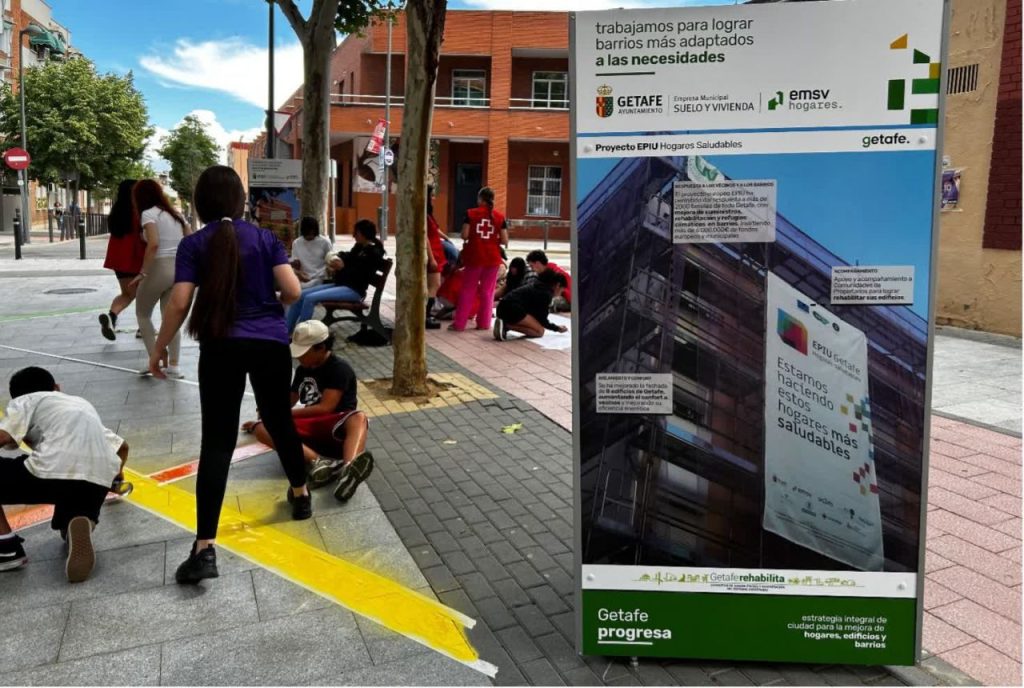
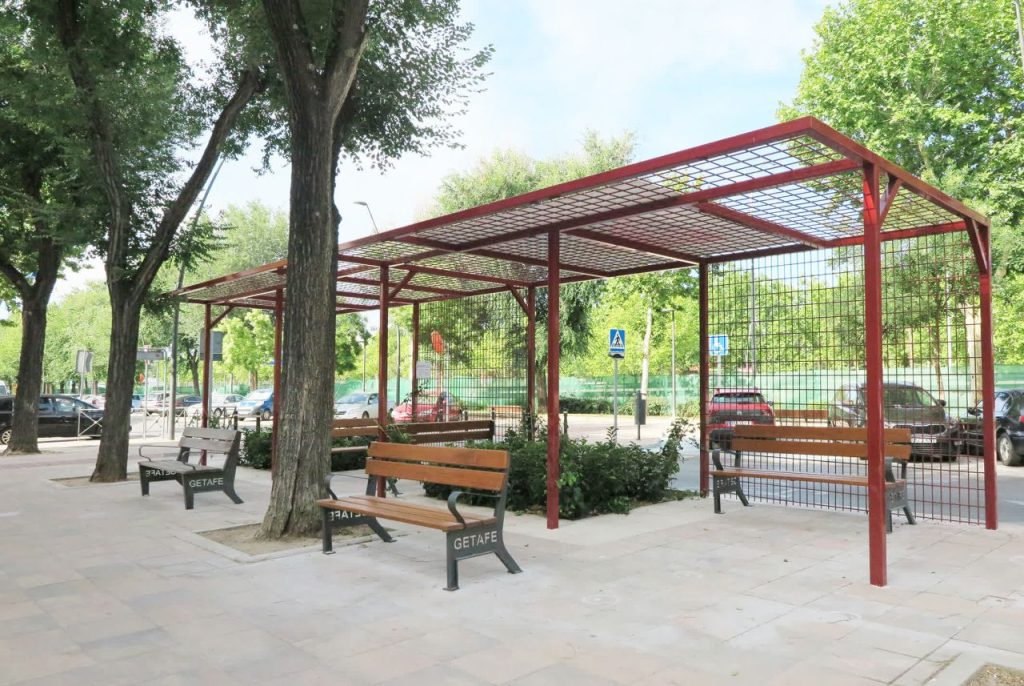
To cool down buildings, cities are also incentivising the integration of nature-based solutions within building and infrastructure design through dedicated strategies, financial incentives and building codes.
The city of Hamburg launched a green rooftop strategy in 2014, with the goal to install a total of 100 hectares of green roof surface in the metropolitan area over a decade. The city subsidises 30 to 60% of the costs of voluntary greening measures and intends to make green roofs and green façades compulsory by law for all suitable buildings. Vienna is also experimenting with integrating greenery into the very fabric of its infrastructure, including green-roofed bus stops, to improve residents’ comfort as they move around the city in times of heat.


Integrating heat action into city governance
While long-term urban redesign and nature-based solutions are central, meaningful action starts by embedding heat resilience into the city’s governance. Ths first essenetail step is to develop heat action plan with a holistic approach – cutting across city departments to address heat in health, energy, environmental, and social policies alike.
Tools like heat mapping, heat health plans, and targeted diagnostics to identify the most exposed areas, are at the centre of this process. In Slovenia, the city of Maribor spent two years developing a comprehensive heat action plan focused on identifying and protecting the most vulnerable groups, including the elderly, children, pregnant women, infants, outdoor workers, and those with health conditions. The overall plan implementation is coordinated by a Municipal Heat Action Plan Steering Group, in collaboration with relevant government departments, city stakeholders, health care institutions and community organisations.
Beyond transforming their urban design on the long-term, municipalities have an important role to play in setting up systems and protocols to immediately protect populations when heatwaves hit. In Valencia, a network of climate shelters – usually cooled municipal buildings open to the public, such as libraries and the city’s energy offices – has been established to provide safe spaces during extreme heat.

Public awareness is central to a city’s preparedness to respond to heat. Athens – which also suffers from extremely hot summers with many days around 40 degrees – has been a pioneer in this area, being the first to appoint a Chief Heat Officer to spearhead efforts to promote heat-safe behaviour and protect citizens in case of a heat wave.
They categorise heatwaves based on how dangerous they are and run city-wide campaigns giving tips on how to stay safe, while mobilising assistance for vulnerable populations. To sound the alarm around the dangers of heatwaves – and bring them to the level of other climate disaster in public consciousness – Seville was the first to name a heatwave with “Heatwave Zoe” in 2022.
In Rotterdam, a city relatively unaccustomed to heat, the use of Heat Action Day on 2 June to increase understanding of the dangers and risks of heat for everyone. They use this day as a magnet around which to mobilise communities, organisations and institutions – including the national government which, for the occasion, developed its first ever National Heat Approach – and spark action at neighbourhood level. As a result, districts have started to put in place heat protocols to protect communities in case of a heatwave.
National and regional level legislation is critical to support cities’ efforts. In Apulia, a regional emergency was declared in the wake of a 2022 heatwave and a law introduced to protect outdoor workers from the dangers of heat.
Putting communities at the heart of resilience
Meaningful community engagement can boost public awareness, crucial to enhance cities’ preparedness in the face of heat. Community involvement in heat action extends help networks to those in need, and accelerates the necessary transformations to make cities more liveable and safer.
Communities can be involved in every step of the process – from helping the city identify heat exposed spaces through climate walks and itineraries, to actively participating in their city’s transformation by partaking in greening and de-paving efforts.
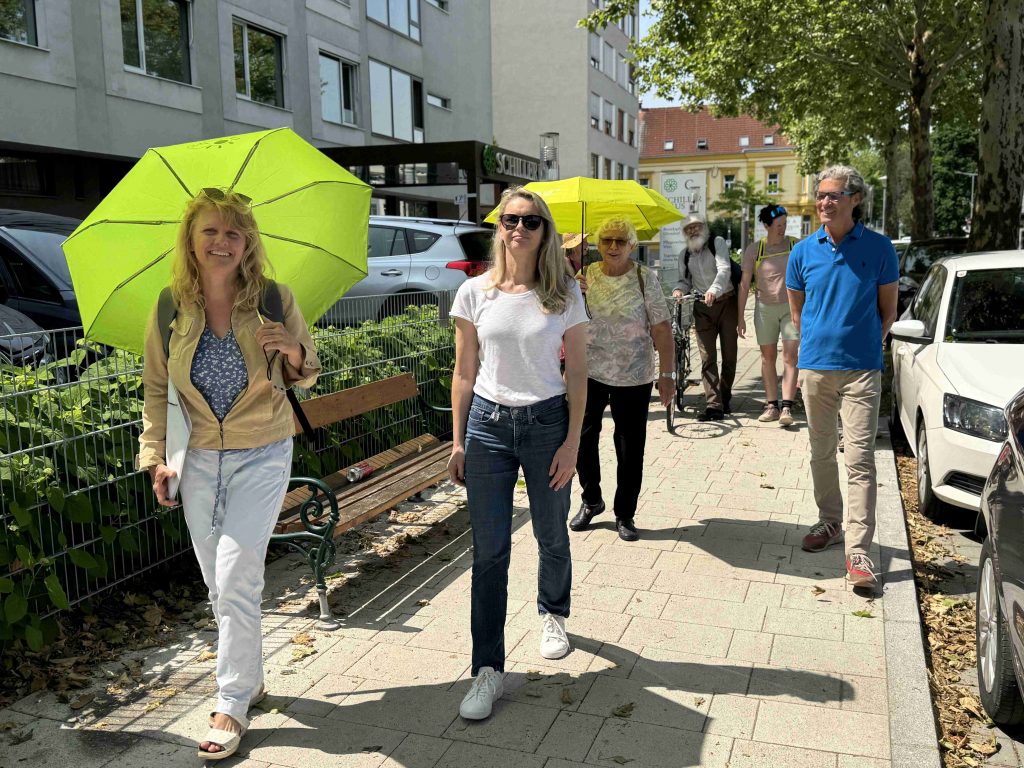

In the Netherlands, a national “tile whipping contest” between municipalities encourages citizens to green their own streets by removing tiles – municipalities support by providing “tile taxis” to get rid of removed tiles, and organising collective depaving efforts in public spaces. A total of 11 million tiles have been removed since the competition was launched in 2021.
Many cities run workshops in the neighbourhoods where regeneration efforts are set to take place, like the ones run as part of Getafe’s Healthy Homes programme – guiding the final plans. In other cities, like in Worms, Germany, public events and workshops are focused on promoting behavioural change in the face of heat, tailored to specific groups, like children and outdoor workers.
In many cities, local organisations are being mobilised to map out vulnerable citizens and provide on-the-ground support, like in Strasbourg, ensuring no one is left behind in times of heat. Building support systems on existing social networks – like neighbourhood groups, churches or mosques, and local businesses – can be life-saving during extreme heat events.


